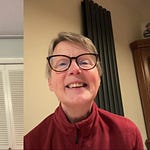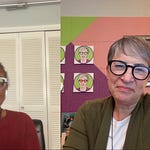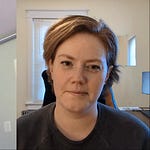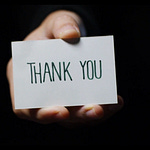Thank you Saira Anwar, Shifra Clara Wasserstein, Denise Sherrington, NAVIRO.AI, Kathryn, and many others for tuning into my live video with Rev. Evelyn Bourne (Ambilike)! Join me for my next live video in the app.
Live Summary
This conversation explores Colorism not just as a matter of skin tone, but as a system of power created during enslavement to divide our people and disrupt unity.
As was shared, the lighter you were, the closer you were positioned to whiteness—often literally placed in the house while darker-skinned folks labored in the fields. That dynamic didn’t end when slavery did. The pain, the hierarchy, the internal distrust — it didn’t disappear. We just inherited it.
We picked up the master’s tool and began using it on each other.
We talked about how colorism shows up:
Inside our families
In our romantic choices
In our workplaces
In our community interactions
Even in Substack spaces where some of us are embraced and others are overlooked
It shows up when a lighter-skinned child is favored over a darker one. When women (and men) feel pressure to lighten their skin, straighten their hair, or alter their features to be seen as “acceptable.” When we distrust our own people faster than we distrust others. And when we measure our worth by someone else’s gaze.
We also talked about the personal wounds many of us carry — rejection, favoritism, abandonment, and the painful silence around it. Healing begins when we name what happened, without shame, without pretending, and without backing away from the uncomfortable truth.
Relevant Sources
How Can We Heal from the Shades of Colorism? - Dr. Sarah L. Webb - TedxUofISpringfield
A key message:
We cannot dismantle a system while still using the tools it trained us to use.
But change is possible — not overnight, not magically, but through:
Honest conversations like this
Education at home
Teaching our children where they come from
Calling out harmful patterns in real time
Choosing solidarity over comparison
We move forward by building communities rooted in dignity, humanity, and mutual uplift — across race, gender, and identity. The goal is simple:
A world where no one has to shrink, explain, or defend the skin they were born in.
Not tolerance.
Not assimilation.
Wholeness.
Belonging.
Freedom.
Understanding “The Master’s Tools”
When Audre Lorde said, “The master’s tools will never dismantle the master’s house,” she was telling us something simple and profound:
We cannot free ourselves using the same mindset that was used to oppress us.
You can’t break chains by tightening them.
You can’t heal the wound.
You can’t build liberation from a foundation of harm.
Now let’s bring this home.
Colorism is one of the master’s tools.
It was intentionally created during enslavement as a strategy of division. The enslavers knew:
If we are united, we are powerful.
If we are divided, we are manageable.
So they built a false hierarchy inside our own community:
Light skin → closer to whiteness → “better,” “safer,” “more valuable.”
Darker skin → closer to Blackness → “less than,” “unworthy,” “expendable.”
This is how our people were separated into the house and the fields — not because of skill or ability, but because of proximity to whiteness. And that wound didn’t disappear. We inherited it.
We began repeating it.
We began defending it.
We began believing it.
That belief is the master’s tool.
And whether we recognize it or not, many of us are still using it — in our families, our relationships, our friendships, our workplaces, our communities, and even within ourselves.
Why This Matters Now
If we are truly committed to healing, unity, and wholeness, we must stop repeating the language of our own oppression.
Because the master’s tools show up today as:
Favoritism in families
Comments about who is “pretty for a dark-skinned girl”
Preferences rooted in trauma, not truth
Policing hair, noses, lips, and bodies
Distrust among our own people
Internalized shame and comparison
Colorism is not just behavior — it is a belief that one of us must be “less than” for someone else to be “more than.”
That is not our truth.
That is programming.
And we have the power to interrupt it.
The New Tools We Choose Instead
We build something new with:
Affirmation instead of comparison
Solidarity instead of competition
Honest conversation instead of silence
Compassion instead of judgment
Self-acceptance instead of self-erasure
We heal when we remember:
We were never created to be enemies to one another.
The master’s house collapses when we stop living inside it.













